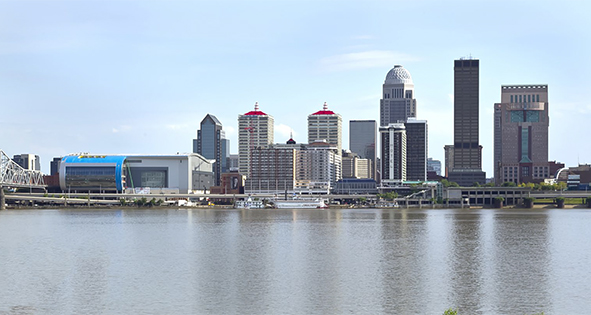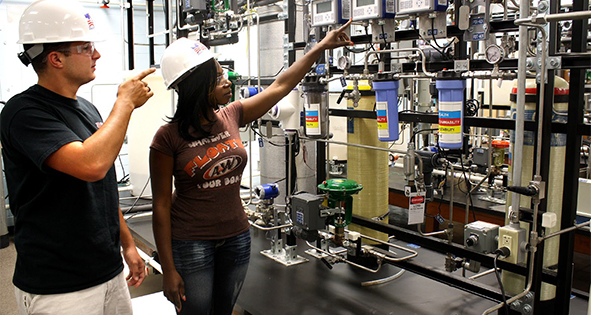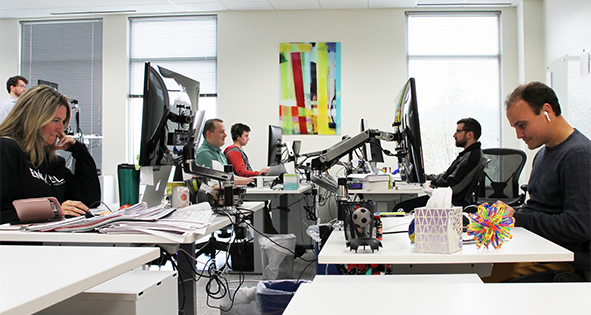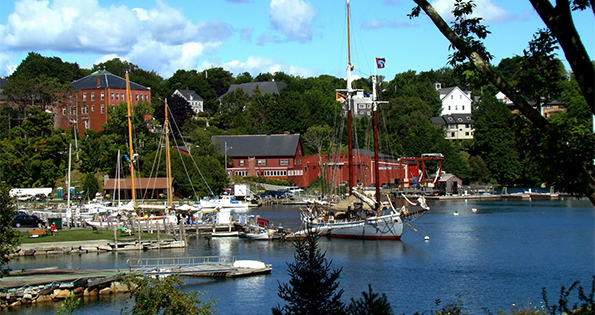
Wisconsin: Education and Technology will drive success
18 Jul, 2016
By Lori Culpepper
Wisconsin and Gov. Scott Walker know that they now compete in a global economy. Education and technology will drive success, which are two things they have focused on extensively and continue to focus on in 2016.
The state recently tripled the amount of funding dedicated to broadband access across Wisconsin. This means that people in Wisconsin can now do business anywhere in the world with access to high-speed internet connections.
There are currently more people working in Wisconsin than at nearly any other point in the state’s history. Even so, one of the most common things Walker hears from employers across the state is that they have job openings but cannot find qualified workers to fill the positions. To fix this issue, the state has invested millions of dollars into worker training programs, especially to prepare highly technical workers to be experts in their fields. Statewide, they have dedicated $150 million to make sure the next generation of Wisconsin workers is qualified and ready to jump in where businesses need them.
Wisconsin’s blend of public-private partnerships is helping technical colleges and universities in the state develop a workforce with skills that make companies and their employees successful. Between the Department of Workforce Development, the Wisconsin Economic Development Corporation and other state agencies, the state is providing tax credits, demand-driven worker training grants and customized training programs to make it all happen.
The Wisconsin university system, anchored by the University of Wisconsin−Madison, supports the researchers, companies and policy-makers across the state that are working to develop solutions to the world’s challenges in water technology, bioscience, medical technology, information technology, and energy, power and control. The state awards the second highest number of doctorate degrees in the country, and the university system consistently ranks in the nation’s top 10 in size and quality.
To help make college more affordable, the University of Wisconsin campuses have frozen tuition for four years in a row. It is also now easier to get an education at technical colleges within the state. Through the Blueprint for Prosperity initiative, 5,000 students were enrolled into high-demand career programs.
In addition to these efforts, Walker says they need to work with students at a younger age to get them ready. In the fall of 2016, 25 school districts will be part of an Academic and Career Plans pilot. Every child in the state between grades 6 and 12 will have access to a plan beginning in the 2017 school year to help them think about their interests so they can take courses in junior high and high school that will prepare them for their future occupations.
Moving forward, Walker will visit every part of the state to hold listening sessions throughout 2016 as part of his 2020 Vision Project. The goal is to bring together a diverse mix of people in small group settings to hear what makes Wisconsin great, where they want the state to be in the next two decades and how to measure success.
The New North
By Rachel Hamilton
The New North covers about 11,000 square miles and 18 counties in northeastern Wisconsin with the city of Green Bay near the center. NEW, according to Jerry Murphy, executive director of the New North, is a popular moniker in the area standing for “Northeastern Wisconsin.”
The economy of the region “grew up around paper,” says Murphy. Now the region can boast paper conversion and packing—hence the name “Packers” for the local NFL team.
“We have diversity within manufacturing,” Murphy says, listing helicopters, naval ships, yachts, metal forming, plastic extruding and the manufacturing of wind towers.
The area not only produces a diverse range, but has the capacity to diversify further, Murphy says. “It’s fundamentally based on the fact that we have this tremendously cool range of production capacities.” Regional manufacturers, he says, are used to considering “their productive capacity relative to the demand for a new product.”
To keep up with a changing production field, the area needs talent. “We’re succeeding in developing a strategic response to talent. […] I think we’re doing a great job,” Tullos says.
“We have a very, very cool postsecondary affiliation here of 13 public postsecondary schools,” he says. The NEW Education Alliance will “resolve training issues systemically instead of competing with each other,” and has created together three technical engineering degrees in about a two year timeframe, says Murphy. They are now adding Information Technology programs.
Additionally, “the business community has now organized itself around the NEW Manufacturing Alliance,” says Murphy. “They have one mission: encourage the development of the next generation talent pool.” This prevents the 130 companies from competing for the same skilled people between them. “They’re making a bigger pie,” says Murphy.
In addition to recognizing “that there is strength in numbers and effectiveness in strategies based on scale,” Murphy says, “We also recognize that the execution level where the transaction occurs, that is at a local level. We value the heck out of that.”
Madison
By Rachel Hamilton
“An impression of Madison historically has been one of a couple of things: either the intense political environment or agriculture,” says Paul Jadin, president of the Madison Region Economic Partnership (MadREP). While he says they are “thrilled” to be known for their dairy products, “We’re so much more than that. We are a tech startup scene.”
The “constant expansion of Epic Systems” is important in Madison. “They’re a national leader in medical software,” Jadin says. “Their growth is an indication of our growth in education and quality of life.”
“You’ll see IT expansions and startups here in great numbers because of the strength of our education system and available workforce and also the workforce that is found through Epic,” says Jadin, explaining that when employees leave Epic, they “tend to stay in the area.” Software publishing, coding and “everything related to IT” are growing, he says.
In addition to information technology, life science, agriculture, distribution and health care are important industries. “We’re a little less dense in manufacturing than [the rest of] Wisconsin, but still ahead of the rest of the country at about 12 percent,” Jadin says.
Trek Bicycle has expanded in Jefferson County. “[In mid-June], we broke ground on a $50 million expansion” of a “1 million square foot distribution center” for Dollar General, says Jadin.
The University of Wisconsin in Madison is “number 4 for research dollars behind only the University of Michigan, the University of Washington and Johns Hopkins. We get about $1.4 billion in research dollars,” Jadin says. “That bodes well for infrastructure of scientific activity and commercialization of products.” One example is Cologuard, a noninvasive cancer screening replacement for colonoscopies.
It also means that the Badgers and all their associated sports, arts and energy “tend to be social activities” for the whole area, according to Jadin.
Portage County
By Rachel Hamilton
Portage County is near the center of Wisconsin along the Wisconsin River and Interstate 39. Its county seat, Stevens Point, is “the No. 1 medium sized city in the state,” says Todd Kuckkahn, executive director of the Portage County Business Council.
The town is seeing expansions of existing companies. Skyward, Inc., a computer software developer, has “moved into their new building,” and added 200 employees, Kuckkahn says; Skyward hopes to employ 1200 employees total in the next few years.
Like Skyward, Ki Mobility is a homegrown Stevens Point company. Ki Mobility designs, personalizes and builds wheelchairs and they also just built a new facility, Kuckkahn says. “Those companies want to stay here because of the type of community it is.”
Four of the healthcare providers in the area are also expanding or building new, he says, and Service Cold Storage is doubling in size. “We’re seeing a lot of scratching of the dirt, as I like to say,” Kuckkahn says.
The East Commerce Business Park has 700 acres of shovel-ready land available for more construction. In addition to the interstate and the river, the county also has access to Canadian National rail and Stevens Point Municipal Airport.
The workforce in Portage County has “a good work ethic,” according to Kuckkahn. He feels the term is “overused,” but he says local businesses are willing to pay their workers in Portage County a little more than their workers elsewhere because of it.
That said, those salaries go a little further in the rural area than they would in Milwaukee, and Kuckkahn says workers realize that and choose Portage County for its “economic vitality” and high quality of life.
Portage County also starts the talent pipeline young. Currently in the K-12 school system, children are learning their alphabet by programming a little plastic insect-shaped robot “to follow a map of the alphabet on the floor,” Kuckkahn says.
The area also has Mid State Technical College and the University of Wisconsin Stevens Point, and they are “being responsive to the needs of the business community,” Kuckkahn says.
Related Posts
-

Business Starts Here
-

TEXAS ENTERS 2021 AS WORLD’S 9TH LARGEST ECONOMY BY GDP
-

CALIFORNIA: 5TH LARGEST ECONOMY IN THE WORLD
-

MINNESOTA: FIRST IN FIVE-YEAR BUSINESS SURVIVAL RATE
-

CANADA: Alberta. More Open Than Ever
-

KENTUCKY: The Bluegrass State Is The Right Place To Grow Your Business
-

TENNESSEE: Great Brands Deserve the Great State of Tennessee
-

LOUISIANA: Custom Workforce for Expanding
-

MARYLAND: Home of Innovators
-

MAINE: Yankee Ingenuity









